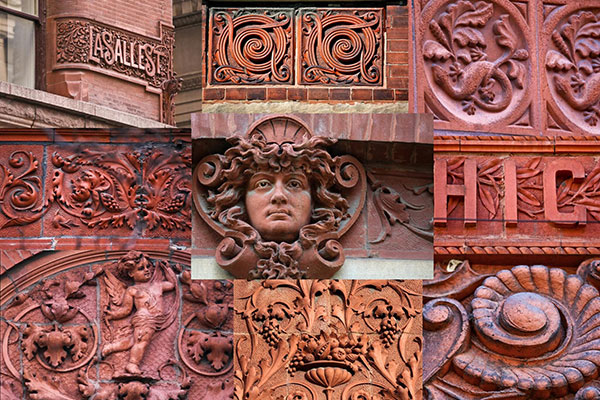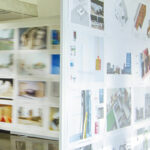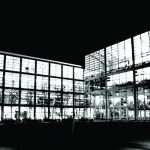Time and Place
Time: 4:30 pm to 6:30 pm
Location: Pritzlaff Building 325 N Plankinton Ave, Milwaukee, WI 53203
Please register for the workshop by emailing Matt Jarosz at mjarosz@uwm.edu
Workshop
Sponsored by the Historic Preservation Institute at SARUP
Terra Cotta: Repair, Replace, Rethink – New Possibilities with Gladding, McBean
Workshop Summary:
Though terra cotta products have been around for thousands of years, the late 1800’s ushered in a new era and new role for terra cotta. It could be used as an economical substitute material that imitated carved stone, such as granite and limestone. Terra cotta is a valued material for the facades of many historic buildings. Originally marketed as fireproof, maintenance-free, and resistant to the atmospheric soiling that plagued other urban facade materials, terra cotta facades are now reaching a service life of nearly a century. Some of these facades require rehabilitation to address falling hazards, changing building uses, facade ordinances, or ordinary maintenance needs. Many building owners and architects have heard of or experienced unfortunate stories about behind-schedule and over-budget terra cotta repair projects. However, with careful planning, the right team can successfully repair a historic terra cotta facade while meeting overall project goals. This workshop will explore architectural terra cotta as a cladding material, including the manufacturing process and key material properties that affect performance. This workshop will review terra cotta investigation and documentation, showing in-situ challenges of repair, and planning for replacement – viewed through the lens of landmark historic preservation regulations and the historic tax credit program. The presenters will talk about the benefits of utilizing terra cotta wall cladding as well as how they are manufactured and installed.
Workshop Presenters:
Michael Kramer, Gladding, McBean, Lincoln, California
This presentation will provide a brief history of the use of architectural terra cotta in the U.S. and focus on Gladding, McBean company restoration projects. The timeline of terra cotta fabrication and the roles of different project team members will be discussed, along with the type of information that is used during this process to help achieve a successful restoration project. There will be a virtual visit of the Gladding, McBean company, the west coast’s largest and oldest terra cotta manufacturing facility. Participants will see the intricate process – from raw material to finished product – and discover the versatile properties of terra cotta as it is formed into a variety of sizes, shapes and colors. This presentation will show several case studies comparing the original tiles to the new terra cotta replacements.
Robert Forrer, Spray-O-Bond Company, West Milwaukee, Wisconsin
Rob Forrer will lead the discussion about the challenges that are currently facing the terra cotta replacement industry, including scheduling and installation. Discussion will cover these issues as well as others raised by participants, who will be encouraged, regardless of prior experience with terra cotta, to ask questions and comment. The presentation will provide an overview of stages of a repair project: document review, condition assessment, field investigation, structural analysis and design, and construction administration. In each stage, examples will be given demonstrating the challenges typically faced. Antiquated existing structural systems and poor original details and installation techniques will also be discussed
Teresa Klopp, UWM SARUP, Graduate
William Krueger, UWM SARUP, HPI Director of Documentation
This presentation will focus on the documentation process of in-situ laser scanning of the terra cotta components of the Pabst Mansion Pavilion in Milwaukee. The Historic Preservation Institute at the University of Wisconsin Milwaukee School of Architecture and Urban Planning is a leading national academic center for use of the most sophisticated tools available for quick, accurate, in-situ, and economical building documentation. The laser scanning electronic files are the new and future technique for building documentation and, ultimately, for communication with the Gladding, McBean terra cotta company – for terra cotta creation – and with the Spray-O-Bond Company – for product installation.
Questions, comments?
All events are free and open to the public.
Additional information about the lectures and exhibitions can be found by contacting the main reception at (414) 229-4014, and by emailing any inquiries to HPI Matthew Jarosz.


